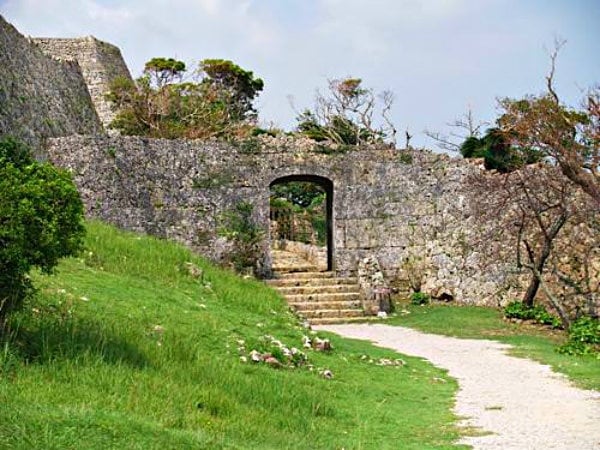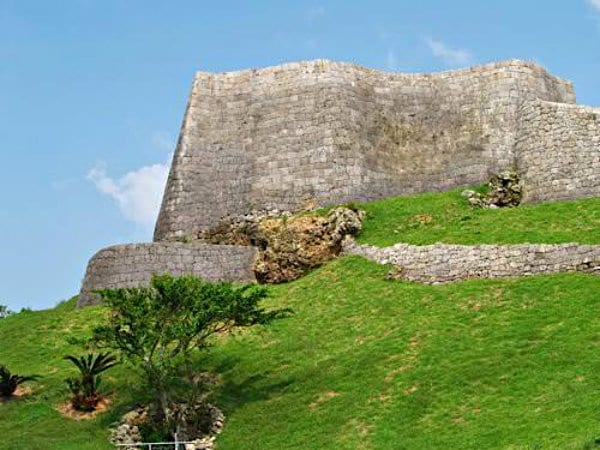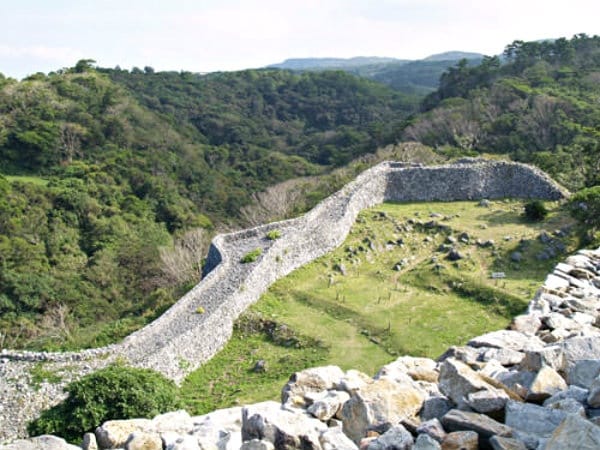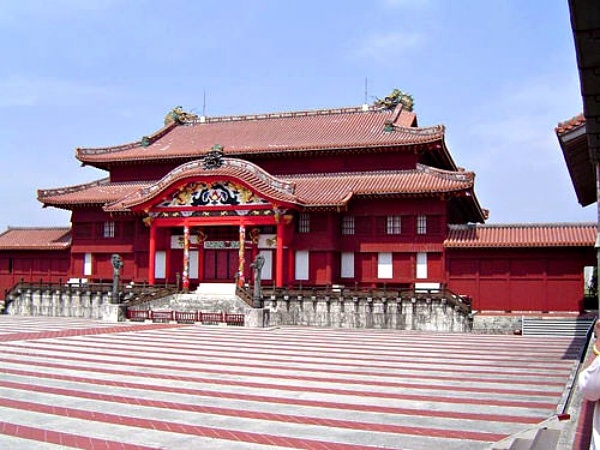The 5 Castles of Okinawa

Okinawa's Ryukyu Kingdom rose out of the island chain's Three Kingdoms (Sanzan, literally "Three Mountains") Period, when it was divided into the principalities of Hokuzan (north), Chuzan (central) and Nanzan (south) in the 14th century. Long aligned with Ming Dynasty China, the kingdom was a key player in maritime trade in Southeast and East Asia.
5. Zakimi Castle (Yomitan, ☆☆☆)

http://www.jcastle.info/castle/profile/84
Zakimi Castle was originally built to check the rising power of the Hokuzan Kingdom to the north. After the Chuzan Kingdom defeated Hokuzan, Lord Gosamaru moved to Nakijin Castle to govern over the area for the Chuzan Kingdom.
Zakimi Castle, along with Shuri Castle and several other related sites in Okinawa, was designated a UNESCO World Cultural Heritage site in 2000. It is also designated a National Historical Site.
Read full story: www.jcastle.info
4. Nakagusuku Castle (Nakagusuku, ☆☆☆)

http://www.jcastle.info/photos/view/738-Nakagusuku-Castle
Nakakgusuku Castle was built by Lord Sakinakagusuku in the mid-14th century, and expanded upon by Lord Gosamaru in the early 15th century.
Gosamaru was moved to Nakagusuku by the king in Shuri to check the rising power of Amawari Aji in Katsuren Castle to the northeast. However, in 1458, the castle fell to attacks by Amawari.
The castle is made up of six baileys, each of a different elevation. It's said that Commodore Matthew C. Perry was impressed by the strength of the castle and the engineering displayed in its construction.
Read full story: www.jcastle.info
3. Katsuren Castle (Uruma, ☆☆☆)

http://www.jcastle.info/castle/profile/110
The 10th lord of this castle, Amawari Aji, is the last and best-known lord of Katsuren Castle. He's famous for fostering prosperous international trade, and many shards of Chinese pottery and tiles were found on the site of the castle.
He was also a cunning and deceiving lord. It's said that he pushed the ninth lord, Mochizuki Aji, off the top of the walls when he tricked Mochizuki to come up there one night, and thus assumed lordship of the castle. Mochizuki was considered to be a tyrant, however, so Amawari was seen as a savior to the people of Katsuren.
As Amawari's strength grew, Lord Gosamaru was moved to Nakagusuku Castle to the southwest to keep him in check.
Amawari tricked the king in Shuri into believing Gosamaru was the bigger threat, and got his support to defeat Gosamaru. Later, he also planned to seize control of the whole kingdom and overtake the king at Shuri, but the king was warned in time and Amawari was defeated. Some stories say it was Amawari's wife—the king's daughter—found out about the plot and warned her father in time. After Amawari, no powerful lords rose in Katsuren Castle.
Read full story: www.jcastle.info
2. Nakijin Castle (Nakijin, ☆☆☆☆)

http://www.jcastle.info/castle/profile/83-Nakijin-Castle
Nakijin Castle is estimated to have been built in the 13th Century by the AJi lords. It was the home of the Aji until the Hanji took control in the 14th century and established the Hokuzan Kingdom, which was based at Nakijin Castle.
In 1416, the Chuzan Kingdom conquered the Hokuzan Kingdom and stationed Lord Gosamaru as governor at Nakijin Castle. Gosamaru was said to have been a descendant of the Aji lords who originally built Nakijin Castle.
Nakijin Castle, along with Shuri Castle and several other related sites in Okinawa, was designated a UNESCO World Cultural Heritage site in 2000. It is also designated a National Historical Site.
Read full story: www.jcastle.info
1. Shuri Castle (Naha, ☆☆☆☆☆)

http://www.jcastle.info/castle/profile/69
This castle was originally founded somewhere in the 13th to 14th centuries. It was modified and expanded several times, coming into its height of power as a palace and fortress for the Ryukyu kings who established the unified Ryukyu Kingdom in 1429.
These kings ruled for about 400 years until the Meiji government ousted the last king in 1879 and established the prefecture of Okinawa. However, the kingdom had already been a vassal state of Japan for some time: From 1609, the kingdom was under the control of the Satsuma Clan, and thereby the Tokugawa Shogunate, but kept some freedom regarding its relationship with China.
Obviously, Shuri Castle was neither influenced by the same factors as typical mainland castles nor does it have many of the same structures or types of architecture. The castle and other related sites in the area were designated a UNESCO World Heritage site in 2000. The present structure is a reconstruction from 1992.
Read full story: www.jcastle.info



